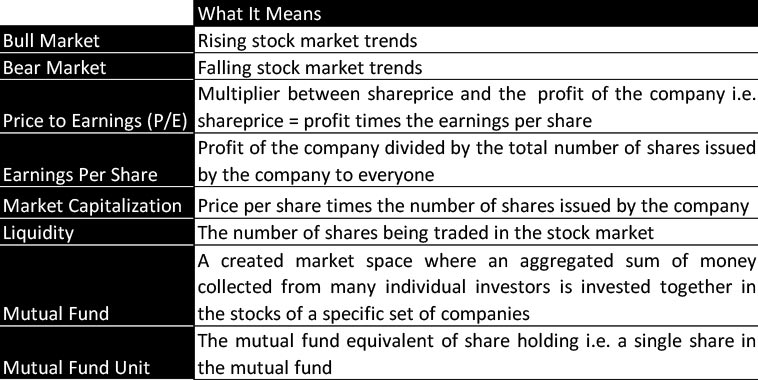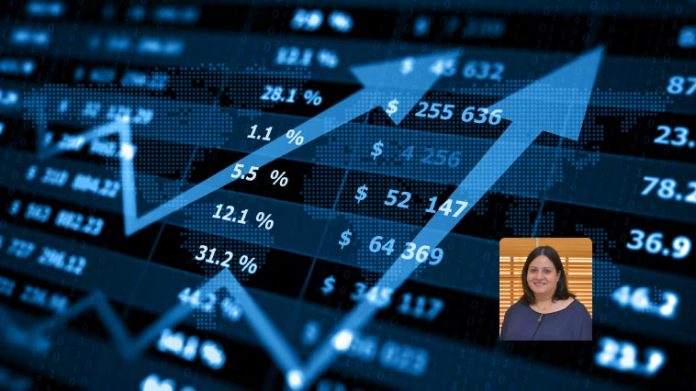My four-year-old thinks bears are among the most frightening animals and, for some reason, she really likes the bovine family and assumes they are docile and loving. Part facts, part conditioning – but accurate when it comes to stock markets. As adults, we have all heard of bull and bear markets, about market rallies and falls, returns, ratios and multiples. It’s an overwhelming world for people outside the financial space. While this is partially due to conditioning, it is a technical space, and, for anyone who was not trained in it, it’s a unique language comprised of complicated jargon. Let’s begin by breaking down that jargon.
The “stock market” is essentially a created market space where companies with actual businesses in the real world, create a new product to be traded – their own performance. They do this when their own core products and services cannot generate the money that they need to grow the business. They can do this, because their ability to operate and grow a business has a certain value that investors (financial institutions, high net worth/large investors as well as the common or retail investor) are willing to bet on.
In exchange for this money rendered to the company, these investors own small parts of the company or “shares” and hence make money (or not) based on the company’s performance. The “multiples” one reads of is the perceived value that aggregated investors attribute to the company’s performance. And like most trades, the more the demand for the shares of a company, the higher its price and its multiples.
 On an aggregated level, a bull market is one where more people expect the aggregate of companies listed on the stock exchange to perform well. A bear market is the opposite i.e. the majority of people believe in a fall of the market. Since its essentially a created marketspace, this belief drives the demand and hence the prices creating bull rallies or bear rallies whichever the case may be. A sort of self-fulfilling prophecy until enough companies over- or under-perform expectations.
On an aggregated level, a bull market is one where more people expect the aggregate of companies listed on the stock exchange to perform well. A bear market is the opposite i.e. the majority of people believe in a fall of the market. Since its essentially a created marketspace, this belief drives the demand and hence the prices creating bull rallies or bear rallies whichever the case may be. A sort of self-fulfilling prophecy until enough companies over- or under-perform expectations.
The number of shares traded multiplied by the price of the share is the “market capitalisation” of a given company. Stock markets hence are segregated into bands of performance i.e. large caps, mid-caps and small-caps which are nothing but indicators of the size and track record of the companies within those bands. The higher the capitalisation, the less risky a company usually is and vice-versa.
Mutual funds are essentially another sector within this larger market space. Here, large financial organisations specialise in identifying companies with the required balance of risk and returns, to create a portfolio of companies they invest in. The companies within that portfolio keep changing based on various parameters driven by the market and the technical knowledge of the mutual fund manager. The customers of these mutual funds are essentially retail investors who, rather than investing in the exact shares, invest in another created product or “mutual fund” the entire corpus of which is then invested in a portfolio of companies. The retail investors don’t own shares, they own “units” in the fund. It’s an added layer of security since the company performance is protected further by the fund manager’s ability to evaluate companies and to balance their holding within his portfolio.
The thing to remember is this: The stock market is essentially a created space to trade the performance of companies – the ‘fundamental product’ is still the products and services that ‘listed’ companies sell. So, common sense says if you are familiar with a specific country, sector or product, choose a company or a mutual fund that focuses on that space. While it’s great to trust your fund managers, if the fundamental product is familiar, you have your required edge of knowledge. If not, leave it to experts – but remember to ask questions. If your expert can’t or won’t answer, you just added a layer or risk to your investment plan.


































